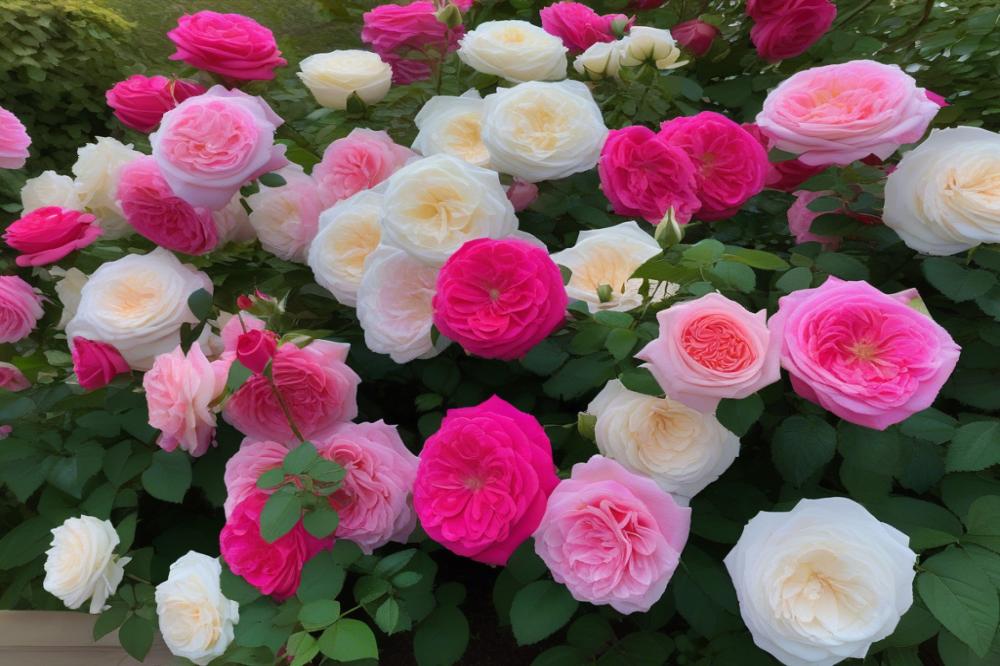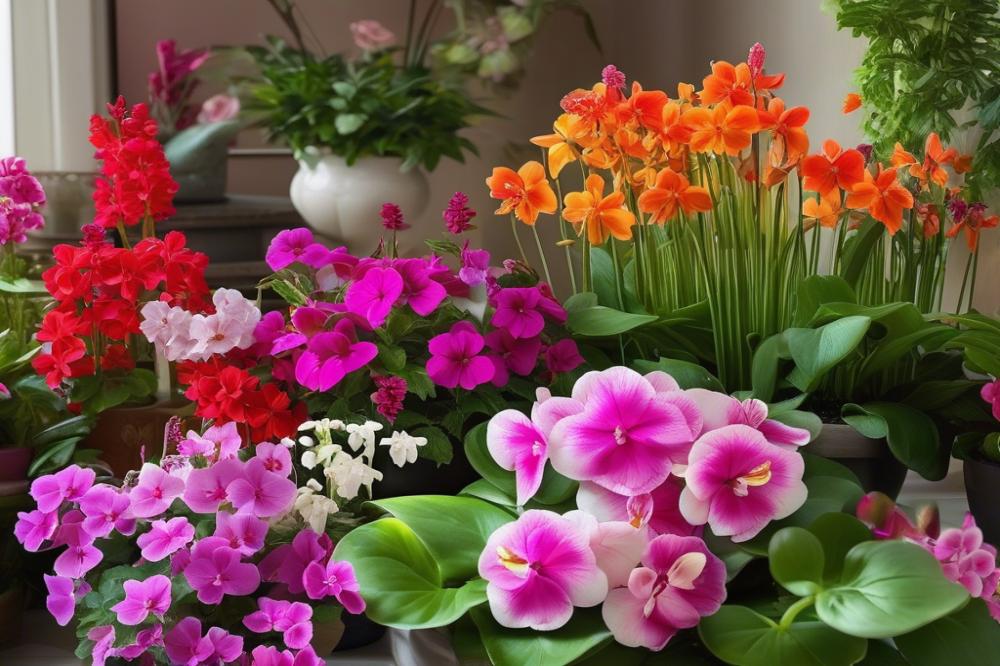Discovering Multiflora Roses
Multiflora Roses are a fascinating choice for gardeners looking to enhance their landscapes with vibrant, flowering plants. These roses are characterized by their clusters of small blooms that often create a stunning display in gardens. With their long history dating back to Japan, where they first became popular, multiflora roses have spread across the world, admired for both their beauty and hardiness. Gardeners appreciate their adaptability and use them effectively in various gardening styles, including traditional, cottage, and even modern designs.
One of the appealing features of this rose variety is its vigorous growth. They can be used as climbing roses, providing vertical interest and softening fences or walls. These plants also serve as excellent ground cover. Gardeners commonly appreciate the range of rose varieties available in multiflora, allowing them to select colors and forms that suit their preferences. Due to their robust nature, these roses often exhibit disease resistance, making them a practical choice even for less experienced gardeners.
Understanding the soil requirements for health is vital for successful rose care. A well-drained, nutrient-rich soil will support robust growth while ensuring they produce abundant blooms. Additionally, effective pest control measures can keep your plants thriving and looking their best. With a few gardening tips, you can enjoy a bountiful harvest of flowers while ensuring your rose plants flourish.
Pruning roses is an important routine that helps shape the plants and encourage new growth. Timing and technique are essential for maintaining the vigor of these plants. With their ability to thrive in hardiness zone 5, Multiflora Roses can be enjoyed across a variety of climates, making them a versatile selection. Whether you’re a seasoned gardener or just starting out, these roses can offer beauty and resilience to your outdoor space.
What are Multiflora Roses

Multiflora roses are a remarkable group of flowering plants known for their vigorous growth and abundant blooms. Their features set them apart in the world of gardening. Most notably, these roses produce clusters of small to medium-sized flowers that create a stunning display in any garden setting. Colors may vary widely, including whites, pinks, and reds, making them visually appealing.
These hardy plants exhibit diverse growth habits. Some grow as sprawling ground covers, while others showcase climbing tendencies, reaching heights that add a vertical element to landscaping. When planting roses of this type, you can expect them to fill spaces quickly, perfect for filling in gaps or covering unsightly areas. They thrive in a variety of conditions and are particularly suitable for zone 5 and higher, enhancing their popularity among gardeners.
Care must include proper pruning roses each year to encourage new growth and abundant flowers. Regular maintenance will also support their disease resistance. Disease-prone varieties can hinder their growth and diminish beauty, so staying proactive is essential. In addition, pest control is vital to protect these plants from common garden pests.
Gardeners often use multiflora roses for their versatility. Their unique ability to adapt makes them suitable as ground cover or as climbing roses on trellises or fences. Many homeowners choose these roses because they create a beautiful, blooming backdrop that attracts pollinators. Since roses can be planted in various areas, you can experiment with combinations of different rose varieties for visual interest.
Understanding the soil requirements is another crucial aspect of care. These plants prefer well-draining soil enriched with organic matter. Ensuring the right conditions leads to healthier root systems, promoting vigorous growth and flowering. Following the tips provided for planting roses will yield the best results.
Growing Conditions for Multiflora Roses

To successfully plant multiflora roses, understanding soil requirements is crucial. Good drainage is vital for these flowering plants. Waterlogged soil can lead to root rot, which can devastate your rose bushes. Aim for a location where water will flow away from the roots. Loamy or sandy soils often work well.
pH levels also play a significant role. Ideally, the soil should have a pH between 6.0 and 6.8. This range supports healthy growth and enhances the blooms’ vibrancy. You can test your soil’s pH with a simple kit available at garden centers. If adjustments are needed, adding lime can raise pH, while sulfur can lower it.
Enhancing the soil with organic matter can improve overall health. Compost or well-rotted manure adds nutrients that roses love. This not only promotes growth but also boosts disease resistance, ensuring your plants thrive despite challenges. Integrating organic materials into the soil also improves moisture retention, which is beneficial during dry spells.
When considering planting, zone 5 is particularly suitable for these climbing roses. They thrive in a range of USDA hardiness zones, including zones 3 through 9. This adaptability makes them a favorite among various gardeners. However, it is essential to watch for local weather conditions, as extreme temperatures can impact their health.
Gardening tips emphasize the importance of careful planning. Route your rose layout to allow adequate spacing for air circulation. This helps minimize pest control issues that can arise from overcrowding. Also, putting the right varieties close together can encourage cross-pollination, leading to stunning blooms.
When it comes time for pruning, follow best practices to encourage new growth. Pruning roses helps maintain shape and removes dead or diseased wood. Strive to prune in late winter or early spring before the growing season begins. This not only supports healthy growth but also increases blooming potential.
Planting and Cultivating Multiflora Roses

Choosing the right site is crucial for successful planting. Look for a spot that gets at least six to eight hours of sunlight daily. Sunlight boosts growth and encourages blooming in flowering plants. Avoid areas with heavy shade or strong winds, which can hinder development.
Spacing is another important consideration. When planting roses, aim for at least 3 to 4 feet apart. This distance allows each plant to receive sufficient air circulation. Proper spacing helps reduce disease risk and supports healthy growth.
Next, preparing the site is essential. Start by digging a hole that is about twice the width and depth of the root ball. Loosen the soil around the hole to promote root expansion. Adding compost can enhance soil structure and provide nutrients. Ensure the soil drains well, as roses dislike wet roots.
Soil requirements cannot be ignored. A slightly acidic to neutral pH range is ideal, typically between 6.0 and 7.0. Test your soil beforehand to determine its pH level. If necessary, amend the soil with lime or sulfur to adjust the pH as needed.
When planting, place the root ball in the hole and top it with soil. Ensure that the graft union, where the plant was grafted onto the rootstock, is level with the soil surface. Water thoroughly after planting to eliminate air pockets.
For young plants, mulching can offer various benefits. Applying a 2-3 inch layer of organic mulch retains moisture and suppresses weeds. Additionally, it regulates soil temperature, creating a more stable environment for growth. This practice is especially helpful in zone 5, where temperature fluctuations are common.
Maintaining young roses requires consistent care. Look out for pests that can affect growth, such as aphids or spider mites. Using natural pest control methods is effective. Spraying a mixture of water and mild soap can deter many pests without harming your plants.
Watering is critical, especially in the initial stages after planting. Regular watering helps young plants establish deep root systems. However, avoid overwatering, as standing water can lead to root rot. A good rule is to provide deep watering when the top inch of soil feels dry.
Make time for pruning roses in the early spring. Removing dead or weak stems stimulates new growth. Focus on shaping the plants for better air circulation and support climbing roses as they grow.
Exploring various rose varieties can lead to exciting discoveries. Some are bred for disease resistance or unique flower shapes. Pay attention to which types thrive best in your area. Your efforts will reward you with a stunning display in your garden.
Caring for Multiflora Roses

To maintain your roses successfully, focus on their watering needs first. A consistent moisture level is vital, especially during their growing season. Water these flowering plants deeply but infrequently. This method encourages strong root development. Make sure to check the soil moisture about an inch below the surface; if it feels dry, it’s time to water.
Fertilization plays an important role in their health. Apply a balanced fertilizer during the growing season. Start with an application early in spring and follow up every 6-8 weeks. Tailor your ratio to the specific fertilizer instructions. Never over-fertilize, as it can harm your plants. Healthy nourished roses exhibit better growth and vibrant blooms.
Mulching is another effective practice that provides numerous benefits. Apply 2-3 inches of organic mulch around the base of the plants. This practice suppresses weeds and retains moisture in the soil. As mulch breaks down, it also enriches the soil. Be sure to keep the mulch a few inches away from the stems to avoid rot.
Pruning roses is necessary to promote air circulation and stronger growth. Remove dead or diseased wood, which helps in maintaining overall health. Timing is essential; prune in late winter or early spring before new growth starts. Always use sharp, clean tools to prevent the spread of disease. Make cuts at a 45-degree angle to encourage healing.
Consider the soil requirements to foster robust growth. Well-draining soil rich in organic matter is perfect. Test your soil’s pH as roses thrive in slightly acidic to neutral conditions. Amend the soil with compost or aged manure if necessary. This step improves both drainage and nutrient content.
Pest control should also be a priority in your gardening efforts. Regularly inspect your plants for common pests like aphids or spider mites. Introduce beneficial insects, such as ladybugs, to help regulate pests naturally. If the problem persists, consider organic sprays to eliminate harmful insects. Keep a close eye on your plants; early detection is crucial.
Lastly, select rose varieties that offer disease resistance. Some cultivars are bred to withstand common diseases like black spot or powdery mildew. This choice reduces the need for chemical control and makes your gardening efforts more satisfying. If you’re in zone 5, consider types that thrive well in your climate.
Pruning Multiflora Roses
Pruning roses is vital for both their health and visual appeal. When you prune, you remove dead or damaged stems, allowing the plant to focus its energy on healthy growth. This practice promotes better air circulation, which is essential in preventing disease. Pruned plants also produce more blooms. In addition, strategically managing growth keeps the structure of climbing roses neat and attractive.
Timing is crucial for effective pruning. Generally, late winter or early spring works well, just before new growth begins. This is when plants are still dormant but the danger of hard frost is lessened, especially in areas like zone 5. Look for signs of life, such as swelling buds, which indicate it’s time to start. Always use sharp, clean tools to make precise cuts. This reduces stress on the plant and minimizes the risk of infection.
When pruning, you should aim for a balanced shape. Start by eliminating any weak or crossing stems. Focus on reducing the center crowding to enhance airflow. For climbing roses, direct long stems horizontally to encourage more blooms along the arch. This helps you manage growth and produces stunning displays during the flowering season.
Regularly assess your roses after pruning. Monitor soil requirements so your roses have the nutrients they need to thrive. Fertilization helps speed up recovery and boosts blooming potential. Incorporating good pest control practices will also protect your roses from common threats.
Finally, consider the unique characteristics of different rose varieties. Some may require more attention than others. Understanding specific needs will further enhance your gardening tips. Always remember, a well-pruned rose is not just healthier; it adds beauty to your garden.
Pest Control and Disease Resistance
Pests and diseases can pose serious threats to your roses. Common pests include aphids, spider mites, and Japanese beetles. These insects often target the new growth and tender leaves, causing significant damage. Preventive measures are essential to maintain the health of your plants.
To combat these pests, consider integrated pest management (IPM). This approach uses a combination of methods to monitor and control pests effectively. Start by introducing beneficial insects, such as ladybugs, which feed on aphids. You can also apply insecticidal soap or neem oil to affected areas. Regular monitoring helps catch infestations early before they escalate.
When it comes to diseases, powdery mildew and black spot are two of the most common issues affecting roses. High humidity and poor air circulation can increase the risk of these ailments. Ensure your plants have adequate spacing to promote airflow. For those in zone 5, choosing resistant rose varieties can also help reduce disease risk.
Maintaining proper care and maintenance routines will enhance disease resistance. Watering at the base of the plant reduces leaf wetness, which can foster fungal growth. Additionally, regularly pruning roses removes infected parts and encourages healthy new growth. It’s a vital aspect of keeping flowering plants vibrant and strong.
Soil requirements play a crucial role as well. Well-drained, nutrient-rich soil supports robust growth and protects against diseases. Incorporate organic matter into your soil to improve its structure and fertility. Even small changes in your gardening tips can make a big difference. Remember, healthy plants are less susceptible to pests and diseases.
Ultimately, proper attention and care will lead to thriving climbing roses. Regularly inspect your plants for any signs of trouble. Healthy practices and immediate action against pests can create an environment where your multiflora roses can flourish.
Final Thoughts on Growing and Caring for Roses
Growing and caring for these vibrant flowering plants can be immensely rewarding. Start with choosing the right location for your plants. They thrive best in areas that receive plenty of sunlight. Soil preparation is crucial, too. A well-drained, nutrient-rich mix will help them flourish.
Follow the gardening tips shared in this article to keep your roses healthy. Regular watering, coupled with appropriate pruning, can lead to bountiful blooms. Remember to watch for pests and diseases as well. Quick action can save your plants and prevent larger issues down the road.
Caring for roses lets you connect with nature and enjoy the beauty they bring. The colors and fragrances can transform your garden into a tranquil haven. Take joy in the process of nurturing them. Your effort will yield stunning results that enhance your outdoor space.
Do not hesitate to implement these strategies. These small changes can make a difference in your garden’s health. Each bloom will serve as a reminder of the care you’ve invested. Embrace the experience and let your garden become a testament to your hard work.



